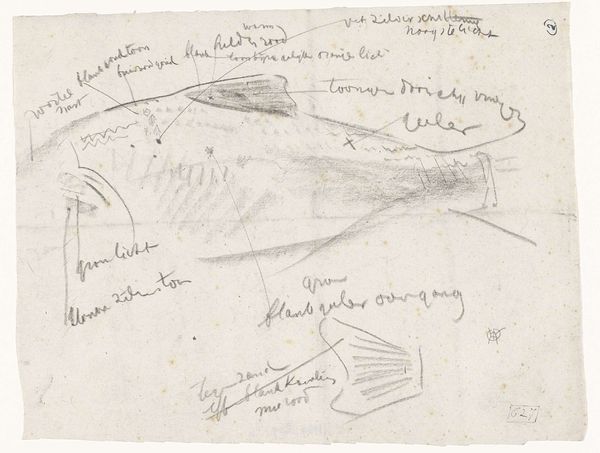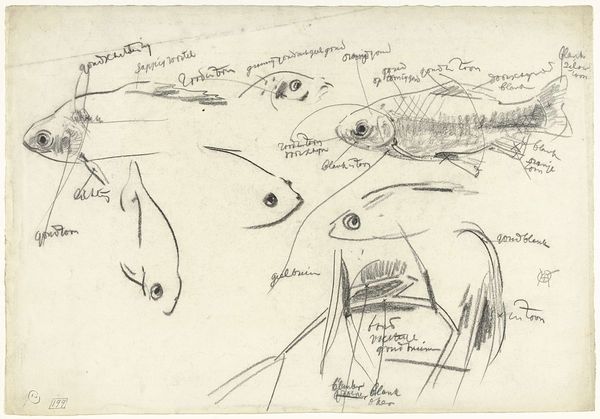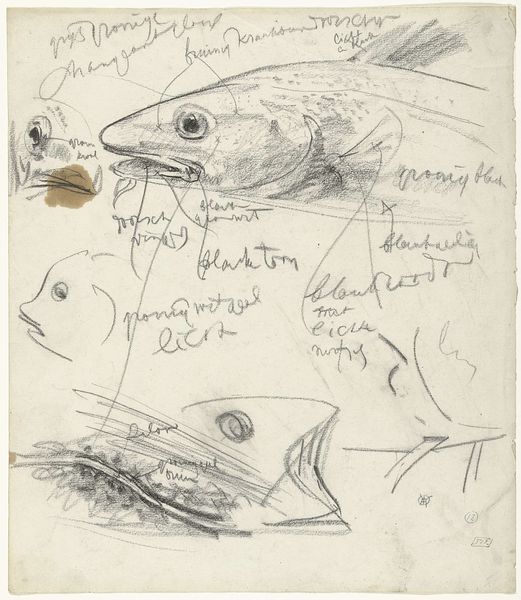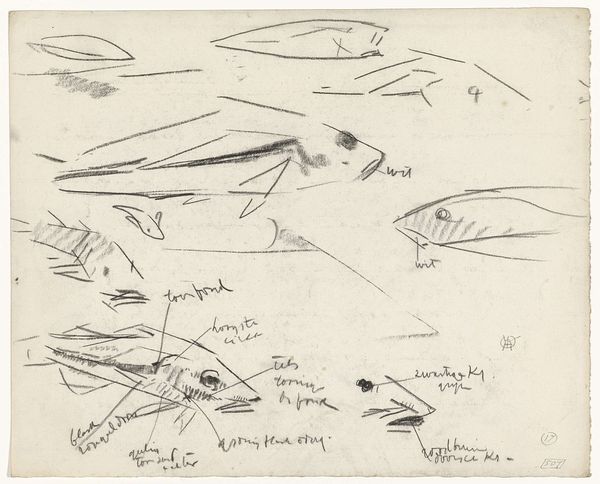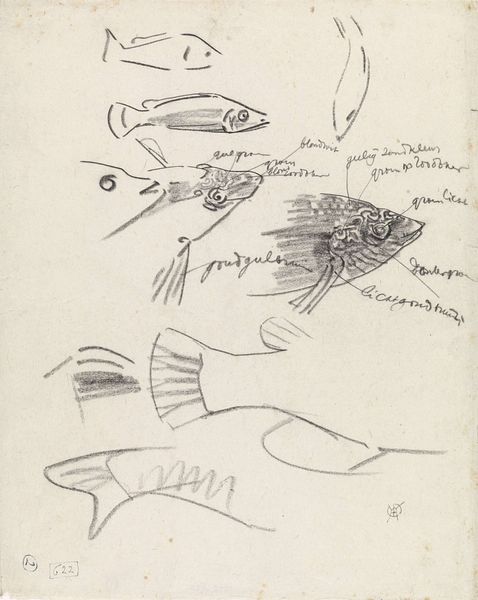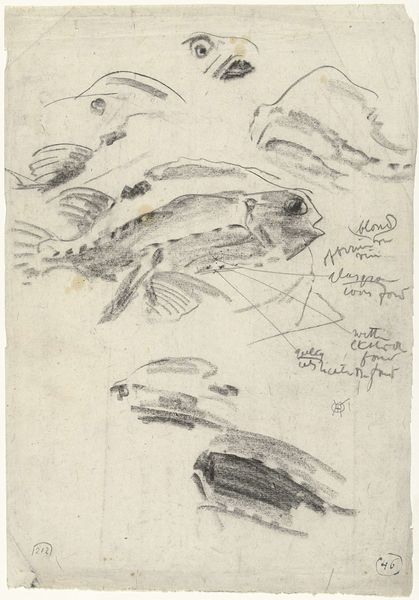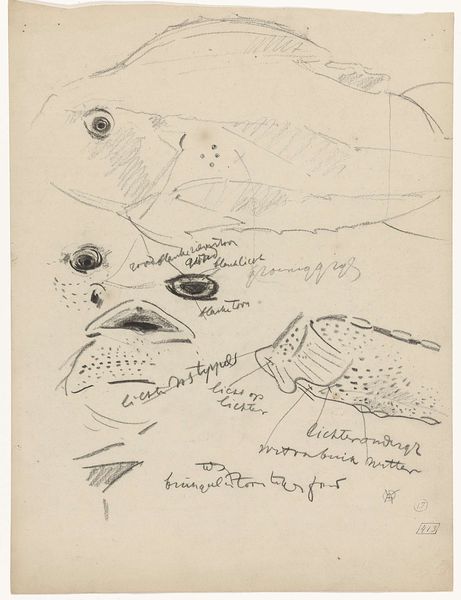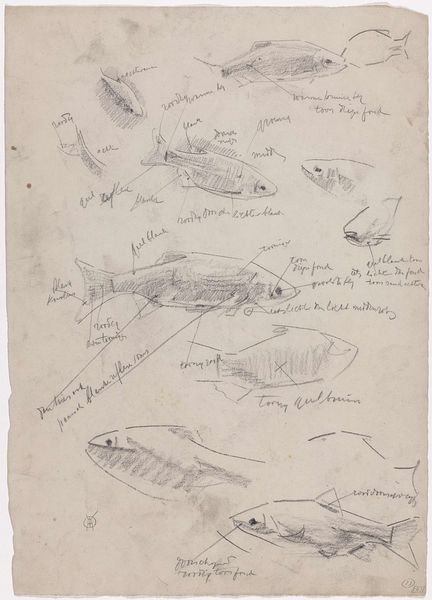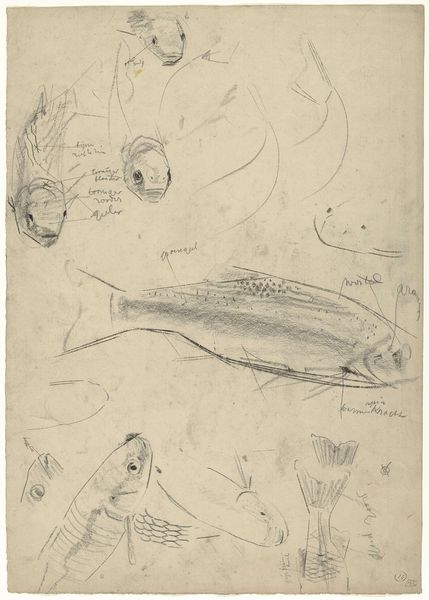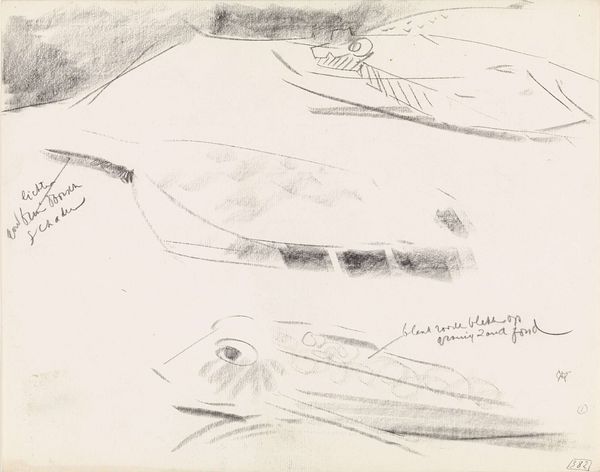
drawing, pencil
#
drawing
#
comic strip sketch
#
quirky sketch
#
pen sketch
#
personal sketchbook
#
idea generation sketch
#
ink drawing experimentation
#
sketch
#
pen-ink sketch
#
pencil
#
sketchbook drawing
#
storyboard and sketchbook work
#
sketchbook art
#
realism
Dimensions: height 268 mm, width 337 mm
Copyright: Rijks Museum: Open Domain
Editor: Here we have Gerrit Willem Dijsselhof's "Detailstudies van vissen, met kleurnotities," dating from sometime between 1876 and 1924. It's a pencil and ink drawing. It almost looks like a page torn from a scientific notebook, yet the varying perspectives and annotations lend it an artistic, exploratory feel. What jumps out at you? Curator: The immediate visual impact resides in the dynamism of the composition. Note the clustered arrangement, devoid of a conventional focal point. Dijsselhof orchestrates a field of visual information, a network of lines and tonal variations. Observe the strategic use of hatching and cross-hatching. Where do you see that? Editor: I see the cross-hatching, especially defining the forms and the shading around the larger fish towards the upper-left. It gives the drawing depth despite being primarily lines. What does it tell us about his method? Curator: Precisely. These techniques do more than merely represent form; they create a sense of movement and volume on a two-dimensional surface. This emphasizes the surface quality of the paper. Dijsselhof seems particularly interested in the raw, unmediated quality of the materials. Are the color notations actually helpful? Editor: Honestly, not particularly helpful by themselves since I cannot read them, but I suspect that wasn't the sole intention. More like part of a process to connect what he sees and how he translates that through mark making. I hadn't considered that the immediacy, but now I do! Curator: Precisely. We observe the artist in media res. The drawing's value is less about an external subject, and more about investigating the act of observing and documenting. It becomes less about accurate depiction, and more about an intellectual record and process. Editor: So, focusing less on WHAT is being drawn, and more on HOW the drawing itself conveys meaning. That makes so much sense! Curator: Indeed. Art becomes an experience registered as marks and forms, less concerned with perfect representation than it is with exploring line, texture, and form in and of themselves.
Comments
No comments
Be the first to comment and join the conversation on the ultimate creative platform.
